Volume 20, Issue 3

Regional Overview
September — December 2018Messages Sent Versus Messages Received
Speeches before and during US Vice President Pence’s trip to Asia (substituting for President Trump) for the annual fall round of summitry added flesh to the bones of Washington’s Indo-Pacific strategy but did little to allay concerns about an impending trade war (or worse) between the US and China. While Pence was not asking anyone to choose between Washington and Beijing, he made it abundantly clear what he thought the best choice would be. While he did not rule out a restoration of good relations with Beijing – once it started behaving itself – most Asians heard his remarks, and those from Trump and other senior officials, as signals that a China-US Cold War had already begun. Meanwhile, the administration’s preference for tariffs as the weapon of choice was seen not as a tool to bring about a “free and open Indo-Pacific” but as a sledgehammer aimed at persuading US firms to return to US protectionist shores. As the president and his team declared their love for bilateral trade deals, Asians pressed ahead with their own multilateral initiatives. Looking ahead, like it or not, the China-US relationship appears to be the dominating feature of the Indo-Pacific economic and security environment.
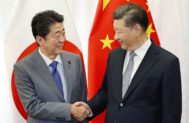
US - Japan
September — December 2018Stability in Tokyo, Disruption in Washington
2018 came to a relatively quiet close for the US and Japan. Prime Minister Abe Shinzo secured a third term as leader of the Liberal Democratic Party (LDP) in a party election on Sept. 20 and is now set to be Japan’s longest serving prime minister. In contrast, President Donald Trump faced an electoral setback in the November midterms. With Democrats taking over the House of Representatives in January, pressure on the administration will grow. In December, Trump dismissed Chief of Staff John Kelly and Defense Secretary James Mattis, and locked horns with the incoming Democratic Party leadership over funding for his border wall. Nevertheless, the US-Japan relationship seemed steady. In September, Prime Minister Abe agreed to open bilateral trade talks and in return sidestepped the Trump administration’s looming auto tariffs. Yet there are differences over their goals, suggesting that continued compromise will be needed. Abe worked hard in numerous summits to position Japan in Asia in the final months of 2018. He visited China, hosted India’s prime minister in Tokyo, and restarted the negotiations with Russia on the northern territories. Japan also announced its next long term defense plan and a five-year, $240 billion implementing procurement plan that includes a considerable investment in modern US weapon systems.

US - China
September — December 2018A Deal is Struck in Buenos Aires
On the sidelines of the G20 summit, Donald Trump and Xi Jinping put tariff hikes on hold and agreed to resume trade negotiations. Prior to the agreement, the US-China spat spilled over into the multilateral arena causing the first-ever failure to reach a joint communique at the Asia-Pacific Economic Cooperation (APEC) meeting in Port Moresby, Papua New Guinea. The imposition of sanctions by the US on the People’s Liberation Army’s Equipment Development Department and its director resulted in a temporary setback in military ties. The US took actions against Chinese individuals and hacking rings for allegedly stealing US technology to gain commercial advantage. The second US-China Diplomatic and Security Dialogue was held in Washington DC. Trump and Xi talked by phone in November and December.
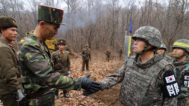
US - Korea
September — December 2018Patience, Tack and Impasse
Despite an impasse in the US-DPRK dialogue, the United States and Republic of Korea largely voiced common cause while tacking to new realities. The allies showed flexibility by continuing the drawdown in military exercises and destroying military posts along the demilitarized zone following the Moon-Kim summit in Pyongyang. The outgoing and incoming USFK commanders both acknowledged challenges to readiness, but spoke in support of inter-Korean efforts to reduce military tensions. Secretary of State Mike Pompeo bristled at inter-Korean accords made without US consultation, while President Moon Jae-in credited the alliance with facilitating the dramatic improvements in inter-Korean relations. Moon sought to spur a second Trump-Kim Jong Un summit, with both seemingly committed. Chairman Kim Jung Un and Pompeo met in October, yet North Korea turned away both Pompeo and the new US special representative for North Korea policy, Stephen Biegun, a month later over sanctions concerns and a block on US aid workers. The US and ROK tacked on an updated KORUS free trade agreement and the launch of a bilateral working group aimed at coordinating North Korea policy. Domestic political developments – Trump’s midterm loss of the House and Moon’s skeptics and economic concerns – will check momentum, though a second Trump-Kim summit might stimulate some activity in relations.
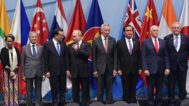
US - Southeast Asia
September — December 2018Deepening Uncertainties
At the mid-point in the tenure of President Donald Trump, Southeast Asian leaders have largely accepted that the era of special attention to the region, which began in the second term of George W. Bush and continued through the Obama administration, has largely passed, if only temporarily. To be sure, Southeast Asia is included in the Indo-Pacific framework and will figure to some extent in Washington’s plans to counter China’s Belt and Road Initiative, which will be partially implemented through the Better Utilization of Investment Leading to Development (BUILD) Act. The region continues to hold up one side of the conflict with China over sovereignty and island-building in the South China Sea and so can be assured of continued attention from the US Indo-Pacific Command. Apart from these broad issues and initiatives, US-Southeast Asian dynamics have returned to a status quo ante of the 1990s, when Washington was focused on geopolitical shifts in other regions, and relations with Southeast Asian nations were bilateral and spiky.

China - Southeast Asia
September 2018 — December 2019Xi Jinping, Li Keqiang Advance China’s Influence, Counter US Pushback
Against the background of intensified US government pushback against Chinese economic, diplomatic, and military practices seen as adverse to US interests, President Xi Jinping and Premier Li Keqiang during visits to annual leadership meetings in the region conveyed confidence that Beijing’s economic prominence, diplomatic resolve, and military power would continue to advance Chinese influence. Xi’s November visits to the Philippines, Brunei, and Papua New Guinea (PNG), including the annual APEC Leaders’ Meeting in Port Moresby, and Li’s November visit to Singapore and participation in the East Asia Summit, ASEAN Plus Three, and China-ASEAN meetings there showed significant gains. Notably, ASEAN was pliant to Chinese preferences on South China Sea disputes and Beijing showed prominence as a rising power among the Pacific Island nations.
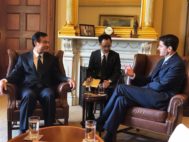
China - Taiwan
September — December 2018DPP Suffers Defeat
The Democratic Progressive Party (DPP) suffered a stunning defeat in Taiwan’s November local elections. Although local issues and personalities were the focus of the campaign, cross-strait economic issues did play a role. The Kuomintang’s (KMT) revival, which improves its prospects in the 2020 legislative and presidential elections, was welcomed in Beijing. While Taipei continues to be concerned about seriously strained US-China relations, Taipei and Washington continue to strengthen their ties.
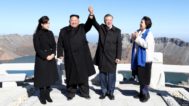
North Korea - South Korea
September — December 2018An Unprecedented Year, but Will Progress Continue?
Inter-Korean relations continued to forge ahead in the final four months of 2018. September’s Pyongyang summit – the third in a year – was full of symbolism, including a trip by the two First Couples to sacred Mt. Paekdu. President Moon Jae-in and supreme leader Kim Jong Un reiterated earlier commitments while adding new ones, notably a raft of CBMs in and near the DMZ to reduce border tensions. Progress elsewhere was slower, since UN and other sanctions continued to block most inter-Korean economic dealings. Despite hopes, Kim did not come South in 2018, but he promised to meet Moon “frequently” in 2019. The US finally allowed a South Korean inspection train to cross the DMZ for joint surveys of the North’s major tracks, and in December the two Koreas held a groundbreaking ceremony for relinking their transport networks – although no actual joint renovation work is feasible unless sanctions on the DPRK are eased. Kim Jong Un’s New Year Address lauded progress made, but upped the ante by warning Seoul that all joint military drills with the US are unacceptable. Continued cyber-attacks, including a recent hack of defectors’ personal data, cast doubt on the North’s sincerity.
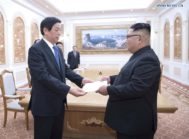
China - Korea
September — December 2018China Reaffirms Tradition: DPRK Friendship and Recovery of South Korean Ties
2018 was a diplomatic breakthrough year for Kim Jong Un, including three summits each with Presidents Xi Jinping and Moon Jae-in and a historic meeting with President Trump. After years of frustration over North Korea’s nuclear and missile development, the 70th anniversary of the founding of the DPRK in September was an occasion for consolidating the China-DPRK friendship. Prospects for regional coordination on North Korea, however, have been hindered due to challenges of implementation of international sanctions and deadlocked US-DPRK denuclearization negotiations. The focus on inter-Korean progress both overshadowed and enabled the gradual recovery of China-South Korea economic and political relations, but progress on North Korea’s broader regional integration remains murky, and the regional dimension of the Korean puzzle remains unclear.

Japan - China
September — December 2018Warmer Political and Economic Relations, Continuing Military Concerns
Prime Minister Abe’s long coveted visit to Beijing gave the appearance of better China-Japan relations, although Chinese President Xi Jinping has yet to confirm a date for the expected reciprocal visit. Trade ties were strong, with Japanese firms taking tentative steps toward participating in China’s Belt and Road Initiative (BRI). As China’s GDP growth slowed, Japan’s showed modest gains. Instances of economic rivalry in Southeast Asia and Africa continued even as both affirmed the need for cooperation. Each side expressed alarm at the other’s robust defense preparations, amid numerous, though somewhat diminished in numbers, complaints from Japan about incursions into its territorial waters and airspace. Tokyo continued to court countries that share its concerns about Chinese expansion.

Japan - Korea
September — December 2018Unfortunate Circumstances and Escalating Tensions
Fall 2018 represented a turning point in Japan-South Korea ties as an uneasy truce between the two countries gave way to escalating tensions. South Korea’s Supreme Court ruled that two Japanese companies must compensate 10 South Koreans forced into labor during Japan’s occupation of the Korean Peninsula from 1910 to 1945. South Korea’s decision to dissolve the foundation built to implement the 2015 “comfort women” agreement between Seoul and Tokyo, though not unexpected, also added to the general atmosphere of growing tension. As 2018 came to a close, tensions flared as Japan alleged a South Korean Navy destroyer locked onto a Japanese Maritime Self-Defense Force plane with a radar used for targeting weapons – a claim Seoul vigorously denies. On the Japan-North Korea front, Prime Minister Abe’s willingness to meet Kim Jong Un characterized Tokyo’s response to the Trump-Kim summit amid increasing uncertainty concerning Japan’s role in talks on denuclearization of North Korea, but with no real change of Japan’s North Korea policy.
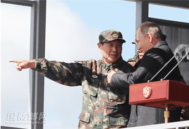
China - Russia
September — December 2018Crouching Army, Hidden Alliance?
On Sept. 11, 2018, two separate but related events in Russia’s Far East underscored both the symbolic and substantive significance of the emerging entente between Russia and China. In Vladivostok, President Putin met Chinese counterpart Xi Jinping on the sidelines of Russia’s Eastern Economic Forum (EEF). On the same day, the Russian military kicked off its massive Vostok-2018 military exercise and was joined by People’s Liberation Army (PLA) troops. The EEF and Vostok took place at a time of heightened tension between the West and the two large powers in multiple areas, ranging from the US-China trade war, termination of the Intermediate-Range Nuclear Forces (INF) Treaty, Russia’s conflict with Ukraine (Kerch Strait on Nov. 25), the South China Sea (SCS), and Taiwan. Moscow and Beijing are increasingly moving toward a de facto alliance, albeit reluctantly. Welcome to the 21st century strategic triangle of reluctant players.
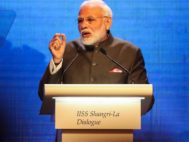
India - East Asia
January — December 2018India Continues Involvement & Integration with the Indo-Pacific/East Asia in 2018
Beginning in 2000, and in almost every year since, Comparative Connections has carried an annual assessment of India-East Asia relations; on occasion this assessment has been combined with one on India-United States relations. The approach to this series of articles has been to review India’s relations with East Asia’s individual countries and subregions such as Southeast Asia and the Pacific Islands. This year our annual assessment of India-East Asia relations takes a new approach: assessing India’s involvement and integration with East Asia thematically (diplomacy, defense, trade/investment and multilateralism) incorporating updates on select/relevant countries during 2018. The impetus to the change is to arrive at a better appreciation of the most important elements of India’s involvement and integration into East Asia’s diplomatic, defense-security, and economic environment.